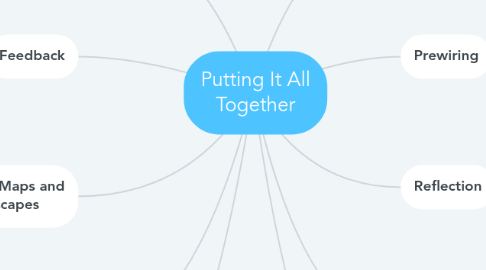Putting It All Together
by Katy Cen

1. Loops
1.1. The loop entails finishing off something that has been brought up before forgetting. This strategy activities the memory bank, which helps the learner to retain information easily.
2. Feedback
2.1. Feedback is part of a loop, and it involves responding to learners’ queries or behaviors. This helps them know their abilities and weaknesses.
3. Mind Maps and Mindscapes
3.1. Mind Maps and Mindscapes are strategies used to connect words, symbols, and images to create visual meaning of a concept. It helps create a flow of ideas and enhances learning memory.
4. Lo, Mo, and Ho Questions
4.1. Lo, Mo, and Ho questions are part of the reflective process. It involves asking deeply focused and purposeful questions during learning to guide the learning process.
5. Response Time
5.1. The teacher also needs to allow a brief response time for learners to answer a question. In this process, the teacher should not provide more confusing elaborations of the questions.
6. Framing
6.1. Framing entails creating an image of something in the mind. This strategy helps a learner develop a vision meaning of words.
7. Prewiring
7.1. The prewriting strategy entails preparing for the mind for the writing process. The strategy enables the reticular activating system of the brain to focus on a particular task.
8. Reflection
8.1. Reflection involves an active process of thinking about what has been learned. It helps learners know the goals they have achieved, skills they developed, and areas that need improvements.
9. Inclusive Responses
9.1. Inclusive responses involves focusing on positive feedback to student’s answers. This approach ensures that as many students as possible can participate in class activities that require their responses.
10. Hands-Free
10.1. The hands-free strategy entails allowing the students to answer questions without necessarily using the conventional methods such as raising hands. However, this strategy should be delayed as long as possible to build a positive culture and a strong relationship between the teacher and the students.


